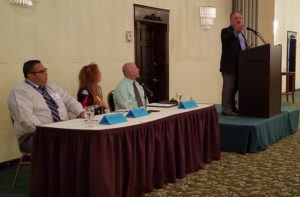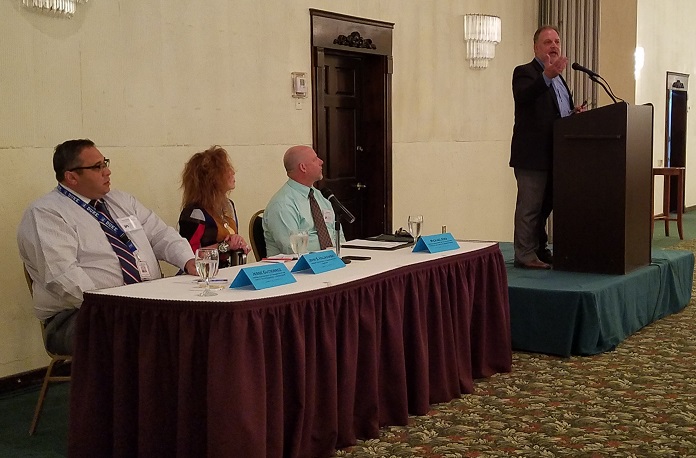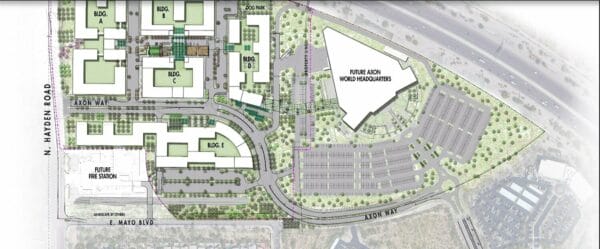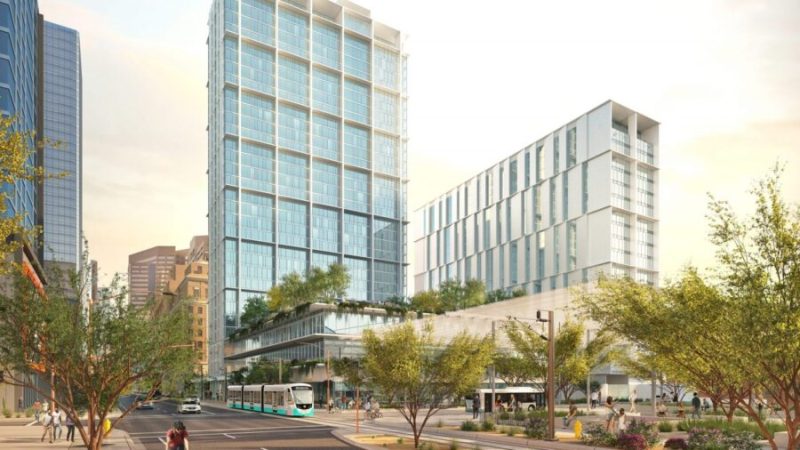
By Callan Smith | Rose Law Group Reporter
All roads led to Pinal County this morning as three ADOT executives spoke in Casa Grande at a Pinal Partnership event.
John Halikowkski, ADOT director, Michael Kies, director of ADOT’s multimodal planning division and Jesse Gutierrez, ADOT deputy state engineer for statewide operations, discussed the recent poor grade U.S. infrastructure received.
The state received a low C grade, at risk of slipping into the Ds, from the Society of Civil Engineers, adding the overall U.S. infrastructure system is in poor condition and showing its age.
Kies said, however, Arizona is better off than other states with 96 percent of its bridges in fair to good condition.
The regulatory processes over the past 33 years are hampering infrastructure development, Halikowski said.
The Trump administration is supporting infrastructure projects that are shovel ready, which is something Arizonians needs to be aware of because “the projects that we need to be building for economic development and the future aren’t sitting on the shelf designed and ready to go,” Halikowski said.
Trump’s trillion-dollar plan is both good and bad, said Halikowski because of the insolvency of the Federal Highway Trust Fund.
For many years, the fund has been propped up by the general fund appropriations to make sure the states are at least getting a base level. The fund has been sustained through continuing resolutions when the money is nearly gone, which has happened 35 times since 2009.
“If we’re trying to plan a long-term transportation system strategically, for economic development and jobs we can’t keep doing it with continuing resolutions,” Halikowski said.
He said he’s not sure where the money is going to come from on the federal level. While ADOT can borrow inexpensively because of its triple-A bond rating, there has to be a revenue stream for repayment. Raising Arizona’s gas tax is an option for funding, but it hasn’t gone anywhere in the legislature.
The State’s 18.4 cent gas tax has been in place since the early 90’s, and for a toll road to happen the support would need to be there.
States cannot rely on the federal government, Halikowski said.
Arizona if falling behind other states that have acted on their own to raise transportation funding through gasoline taxes, vehicle registration, and sales taxes.
Over the next 25-years, Arizona will need 105 billion in transportation funding for highways, transit, airport improvements and preservation of the system, Kies said.
“When we take our current revenue stream, gas taxes have not been raised, car sales are flat and not growing as fast they used to, when we look at our future revenue we don’t have the 105 billion that we need. Somehow we have to make tough choices,” he said.
ADOT has also decided that over the next 25-years, Arizona should spend 370 million each year just to preserve its transportation system in its present state, but that doesn’t account for roads that need to be reconstructed because of deterioration, Kies said.
Arizona’s commerce corridors are of great importance and need improvement, such as the I-10 connection to California built in the 70s.
“There are 16 million people in San Diego and LA, the same in Dallas-Fort Worth and to the South, we have our 18-billion-dollar trading partner, Mexico. Phoenix sits in the middle, one truck-day from LA, which means opportunities to become a hub,” he said.
A 20-billion-dollar package has been identified for the commerce corridor to widen the I-10, Casa Grande to Phoenix, widen I-17 north of Phoenix and make improvements to I-10 west to California, because Phoenix is a critical link to the Ports of Los Angeles and Long Beach.
ADOT is working to optimize operational efficiency, by working to identify areas of need and ensure that each and every maintenance and construction unit is appropriate for the need, Guiterrez said.
“Our goal is to use all of our taxpayer dollars, in the right way, as the right place, at the right time, which has been paying off in dividends,” he said.
When questions were taken from the audience about the need for certain projects, Halikowski said Arizonians need to contact their local and state representatives about transportation issues so ADOT can better understand needs around the state.









